A cool thing about Thai art is, you never run out of perspectives. Keep exploring a temple and you’ll always find new ways to enjoy it.
Perspective in Thai art doesn’t assume to give one all-encompassing view of the whole shebang. Temples do have centers–the main Buddha statue and the stupa, (Wat Hua Khuang’s is in the above photo) are the most revered places. But their forms aren’t strict, like the 3 dimensional perspective that developed in Florence in the 15th century. They’re gentle and rippling. These monuments rule, but benevolently. They allow magic to emerge in their surroundings.
Wat Hua Khuang’s stupa’s form is very soft.
The stupa symbolizes the 3 worlds cosmology that Thai Buddhism adopted from Sri Lanka and India. The bottom represents earth, the middle (shown above) represents the heavens, and the top is the realm beyond all forms. Thais often took this vast conception and made it graceful. Like many Thai stupas, Wat Hua Khuang’s doesn’t impose on anything. Its lilting forms play and dance. This lightness allows other buildings to shine.
The above building is called the ho trai. Monks store scriptures in them. But Wat Hua Khuang’s doesn’t have the gravity that you’d expect from a building where sacred books preside.
The ho trai’s glimmering golds and green designs stand out from the dark teak wood. The bright and earthy colors balance each other. But my favorite thing about Wat Hua Khuang is–
–all the buildings complement each other. They all allow each other space.
And they give you space to amble and enjoy them from many places. They’re centers of perspective, but they allow limitless vantage points. All are given room. The world, with its multitude of life-forms, is in balance–just as Thais like it.
And some very interesting spirits live in this world, as we’ll see in the final post on Wat Hua Khuang.

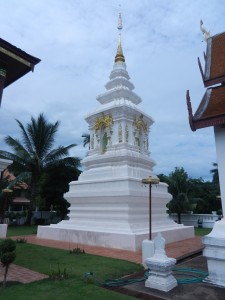
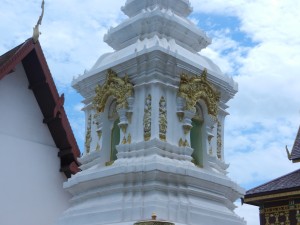
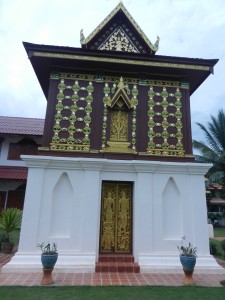
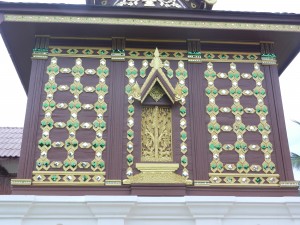
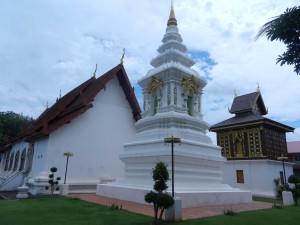
Comments on this entry are closed.